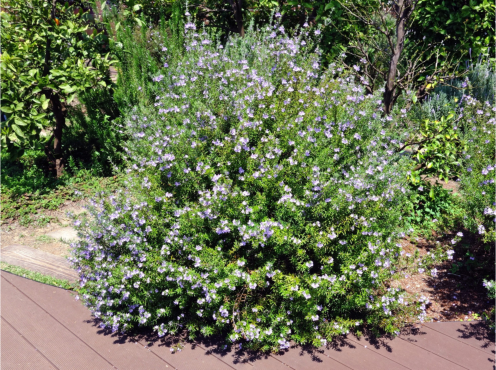Low Maintenance Plants
Nowadays, many Australians find themselves caught in the crossfire of managing work, family, and self-care, leaving little time for gardening. Yet, a blooming garden can offer tranquillity, a sense of accomplishment, and a touch of nature amidst the urban sprawl. Recognizing this paradox, the botanical world offers a solution: low-maintenance plants that are well-adapted to the unique Australian climate.
Low-Maintenance Plants for Aussie Gardens
Native Shrubs
- Acacia: Often known as wattles, they flaunt beautiful golden flowers.
- Westringia: A coastal shrub resistant to sea spray, often nicknamed “native rosemary” due to its needle-like leaves.
- Callistemon: Commonly known as bottlebrushes, their vibrant red flowers attract native wildlife.
Grasses and Groundcovers
- Kangaroo Paw: With its iconic red and green flowers, it’s a favorite among Aussie gardeners.
- Lomandra: A hardy tufted grass that remains green year-round.
- Dichondra ‘Silver Falls’: A creeping plant perfect for hanging baskets and borders.
Drought-tolerant Perennials
- Eremophila: Known as emu bushes, they showcase tubular flowers in various colors.
- Grevillea: With spider-like flowers, they are excellent for attracting nectar-feeding birds.
- Agave: Succulent plants that store water in their thick leaves, perfect for arid areas.
Hardy Trees for the Aussie Garden
- Eucalyptus: Iconic Australian trees, many species provide koala fodder.
- Corymbia: Renowned for their ornamental flowers and textured bark.
- Banksia: With unique cylindrical flowers, they make for great focal points.
Benefits of Choosing Low-Maintenance Plants
1. Time-saving
- Effortless Care: One of the primary reasons gardeners gravitate towards low-maintenance plants is the minimal care they require. Less time spent on pruning, watering, and pest control means more moments to simply relax and enjoy the beauty of your green space.
- Flexibility: For those with erratic schedules or frequent travels, these plants ensure the garden remains thriving in their absence.
2. Water Conservation
- Drought-resilience: Many low-maintenance plants, such as succulents or native Australian flora, are naturally drought-tolerant. Their adaptation to water-scarce environments makes them perfect for areas with infrequent rains.
- Ecological Responsibility: As global water resources become increasingly strained, opting for plants that need less water aids in conservation efforts. This not only reduces your water bills but also contributes to a more sustainable environment.
3. Resilience in Fluctuating Weather
- Adaptability: Low-maintenance plants are often hardy by nature, capable of withstanding varying weather conditions, from scorching heat to sudden cold snaps. This resilience ensures the survival and health of the garden despite unpredictable weather patterns.
- Reduced Replanting: Their sturdy nature often means these plants have longer lifespans, reducing the need for frequent replanting or replacement.
4. Less Pest and Disease Issues
- Natural Resistance: Many low-maintenance varieties, especially native plants, have evolved alongside local pests and diseases, leading to in-built resistance. This cuts down the need for chemical interventions.
- Eco-friendly: With reduced need for pesticides and fungicides, gardens remain more organic and environmentally friendly. This also supports local fauna, from beneficial insects to birds, ensuring a thriving ecosystem.
5. Economic Savings
- Reduced Garden Expenditure: Less frequent watering, fewer pest control products, and reduced need for replanting all contribute to notable financial savings over time.
- Increased Property Value: A well-maintained garden, even if primarily composed of low-maintenance plants, can enhance property appeal and potentially increase its value.
6. Aesthetic Diversity
- Variety: The term ‘low-maintenance’ doesn’t equate to limited variety. From flowering plants to ornamental grasses, there’s an extensive range of beautiful plants that require minimal care.
- Year-round Beauty: Many low-maintenance plants offer seasonal blooms or maintain their aesthetic appeal throughout the year, ensuring the garden remains vibrant irrespective of the season.
Practical Tips for Ensuring Plant Health
- Proper Soil Preparation: Healthy plants start with the right foundation. Ensuring proper drainage, enriching soil with compost, and periodic pH tests can set plants up for success.
- Regular, Infrequent Watering: Over-watering can be as detrimental as under-watering. Deep, infrequent watering promotes strong root growth, allowing plants to access moisture during dry spells.
- Using Native Mulch: Mulch from local trees and plants not only retains moisture but also deters weeds, enriching the soil as it breaks down.
- Pest Monitoring and Natural Controls: Regularly inspecting plants, introducing beneficial insects, and opting for natural repellents can keep pests at bay without resorting to harmful chemicals.
Australia’s Diverse Climates
Australia, often envisioned as a sun-baked land of deserts and iconic beaches, is a continent of climatic contrasts. From its tropical north to temperate south, arid interiors to moist coastal belts, the vastness of the country is matched only by its diverse climates. Understanding this climatic diversity is key for various endeavors, from agriculture and horticulture to city planning and water management.
1. Coastal Climate
Surrounding Australia’s perimeter is the coastal climate, characterized by its proximity to the ocean which acts as a moderating influence.
- Western Coastal Areas (Perth region): Experience a Mediterranean climate with wet winters and dry summers.
- Eastern Coastal Areas (from Melbourne to Cairns): Generally enjoy a temperate climate. The northern part is more humid and sub-tropical with mild winters, while the south experiences cooler winters and less humidity.
- Southern Coast (Adelaide and Melbourne): A more temperate maritime climate with cool to mild winters and warm summers.
Key Features
- Regular rainfall, especially in winter or summer depending on the region.
- Mild temperatures, but can be humid, especially in the north-east.
- Coastal winds and salt spray can influence vegetation.
2. Inland/Arid Areas
Making up a significant chunk of the Australian landmass is the vast arid and semi-arid region.
- Central Australia (Alice Springs): Defined as desert, it receives minimal rainfall, which can be unpredictable.
- Surrounding Deserts (Great Victoria, Simpson): Experience extreme temperature fluctuations between day and night.
Key Features
- Low annual rainfall, leading to drought-adaptive vegetation.
- Extreme temperature fluctuations between day and night.
- Sandy or rocky soil, with patches of clay.
3. Tropical and Sub-tropical Regions
The northern tip of Australia sits firmly in the tropics.
- Far North (Darwin, Cairns): Experiences a tropical climate with distinct wet and dry seasons.
- Sub-tropical Regions (Brisbane): Have milder and less distinct wet and dry periods, with occasional summer storms.
Key Features
- High humidity, especially during the wet season.
- Monsoonal rains in the tropical regions can lead to flooding.
- Lush vegetation during the wet season, but landscapes can dry out during the dry season.
4. Mountain Regions and Cooler Climates
Australia’s mountain ranges, such as the Snowy Mountains, and the island state of Tasmania have cooler climates.
- Mountainous Areas (Snowy Mountains, parts of Victoria and Tasmania): Experience snowfall in winter and mild summers. Some areas have alpine conditions.
- Tasmania: Largely temperate maritime but can be colder than mainland coastal areas.
Key Features
- Snowfall in winter in alpine areas.
- Cool to cold winters with frost, and mild summers.
- Rich soil in many regions, leading to lush forests.
Conclusion
The allure of low-maintenance plants extends beyond their captivating aesthetics; it lies in the liberation they provide. For those leading busy lives in Australia, these resilient botanical wonders offer the pleasures of gardening without the burden of constant upkeep. Embracing these hardy and self-sufficient species allows you to infuse your living spaces with the splendor of nature, effortlessly.
To explore an array of such low-maintenance botanical marvels and discover how they can transform your living environment, we invite you to delve into the products and services of Bourke’s Florist. Experience the harmonious blend of nature and convenience that these plants bring, turning your space into a tranquil oasis. Visit www.bourkesflorist.com.au to learn more about our offerings and embark on a journey of effortless botanical elegance. Your sanctuary deserves nothing less than the extraordinary.
FAQs
Q: Are these plants suitable for pots and containers?
Yes, many low-maintenance plants, especially smaller shrubs and ground covers, are suitable for containers.
Q: How often should I water low-maintenance plants during summer?
Generally, once a week is sufficient, but it varies based on the plant and soil type.
Q: Where can I purchase Australian native plants?
Local nurseries, botanical gardens, and specialized online retailers offer a variety of native plants.
Q: Can these plants thrive in urban settings with pollution?
Many can, as they’re adapted to diverse conditions. However, it’s best to consult with local nurseries for specific recommendations.
Q: Do I need to fertilize low-maintenance plants frequently?
Most native plants are adapted to Australia’s nutrient-poor soils and require minimal fertilization. If needed, use a slow-release, low-phosphorus fertilizer.





















